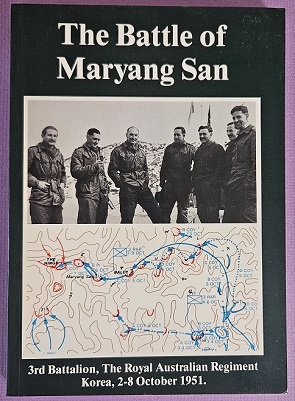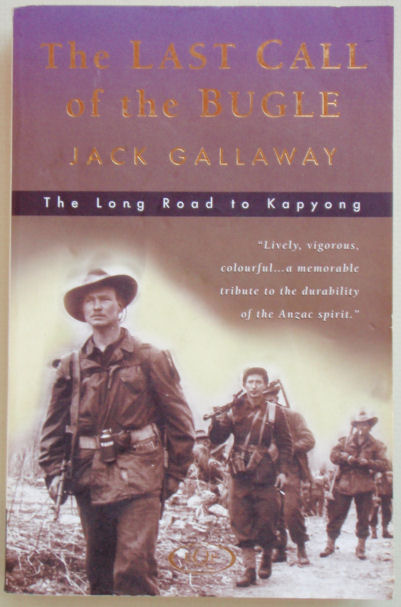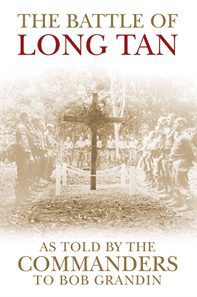Description
Title: The Battle of Maryang San, 3rd Battalion, The Royal Australian Regiment, Korea 2-8 October 1951
Author: Breen, Bob
Condition: Near Mint
Edition: 2nd Edition
Publication Date: 1994
ISBN: 0642182221
Cover: Soft Cover without Dust Jacket – 122 pages
Comments: The account of the Battle of Maryang San during the Korean War.
In early October 1951, 3RAR (3rd Battalion, Royal Australian Regiment), in conjunction with British Commonwealth troops, attacked a group of hills near the Imjin River. The attack was named after the biggest of these hills and became known as the battle for Maryang San or “Operation Commando”.
The operation began on 3 October with a British assault on one of the other dominant features, Hill 355 (known as Kowang San or “Little Gibraltar”). Then, on the morning of the 5th, 3RAR attacked Hill 317 (Maryang San). The Australian force approached Hill 317 through rugged countryside at 4 am, under a heavy cloak of mist. At 10 am, the mist began to lift, exposing the Australian advance. However, the communists briefly hesitated before firing, which allowed 3RAR to capture the first line of defences in a fierce burst of fighting. The following morning 3RAR drove the communist forces from their position atop the hill, but they had to resist enemy counter-attack. The crest of the Hill 317 was secured on 6 October, after which the Australians assisted the British to take a lesser feature, Hill 217. This was finally achieved on the morning of 8 October.
Operation Commando was strategically important to the UN forces because if Maryang San was secured, the Chinese would be forced back two or three kilometres, thus losing their view of the Imjin salient. This battle was also significant as it was thought to be the last chance for the UN forces to position troops before the ceasefire and armistice negotiations.
There had been two previous attempts to take Maryang San by American troops, both of which had been unsuccessful. However, over a fiercely fought battle, against superior enemy numbers, UN troops were able to gain and secure the hills 317 (Maryang San) and 355 (known as Little Gibralter).
The official historian for the Korean War, Robert O’Neill, wrote of this battle:
In this action 3RAR had won one of the most impressive victories achieved by any Australian battalion. In five days of heavy fighting 3RAR dislodged a numerically superior enemy from a position of great strength. The Australians were successful in achieving surprise on 3 and 5 October, the company and platoon showed high courage, tenacity and morale despite some very difficult situations, such as that of D company when the mist rose on 5 October and those of B and C Companies when the weight of enemy fire threatened their isolation of Hill 317 on 7 October … The victory of Maryang San is probably the greatest single feat of the Australian Army during the Korean War.
By 5 November, after the Australians were withdrawn to recuperate, Maryang San had been recaptured by the Chinese. It was a terrible blow to morale for those who had fought long and hard to capture it. The tactically important ground of Maryang San remained in the hands of Chinese forces for the rest of the war.
Inscribed by General Sir Frank Hassett – General Sir Francis George “Frank” Hassett AC, KBE, CB, DSO, LVO (11 April 1918 – 11 June 2008) was an Australian general who rose to the position of Chief of the Defence Force Staff; a position marking him as the professional head of the Australian Defence Force. Serving in this capacity from November 1975 until April 1977, he had originally joined the Australian Army in 1935 upon gaining entrance into the Royal Military College, Duntroon. Serving with distinction in the early stages of the Second World War, he was promoted to lieutenant colonel in 1942 at the age of 23 and posted as a staff officer for the remainder of the war.
In 1951, Hassett was appointed to command the 3rd Battalion, Royal Australian Regiment in Korea, where he led the unit through some of the toughest fighting of the war. For his leadership and planning during the Battle of Maryang San, he was granted an immediate award of the Distinguished Service Order.





